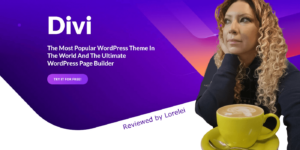I’ve been obsessing over search since Google felt cutting-edge, yet 2025 is the first year I catch myself talking to my laptop and expecting an answer that isn’t the standard blue-link buffet.
If you’re still writing meta tags like it’s 2018, trust me—the algorithm has already ghosted you.
At Lorelei Web we watch trends the way day traders watch tickers, and ten signals keep blinking red-hot right now.
You already saw the headline list; let’s break each one open, poke at the wiring, and map real-world plays that move revenue instead of vanity metrics.
1. AI Overviews (AIO): When Google Writes the Résumé for Your Page
November 2024 logged an 18.76 % AIO appearance rate in U.S. SERPs—triple the visibility we measured 18 months earlier.
CTR on organic results beneath those candy-colored cards?
Depending on query class, it tanks anywhere from 18 % to 60 %. I don’t lose sleep over lost clicks; I lose sleep over losing citations. If an overview quotes you, users arrive pre-sold, and conversion rates rise. I now design “answer capsules”—120-word, schema-wrapped passages—so Google can plagiarize me legally.
2. Answer Engine Optimization (AEO): The Rise of Conversational Gatekeepers
ChatGPT, Perplexity, You.com—call them copilots, call them upstarts, they’re siphoning early-stage discovery.
AEO isn’t just FAQ markup; it’s linguistic choreography.
I write questions exactly the way frazzled humans mutter them at 2 a.m., then pipe answers through a style checker that strips fluff.
The payoff?
My content shows up verbatim when ChatGPT cites sources (yes, it still does—60 % of the time incorrectly, but that’s a rant for another day).
3. Semantic Search: From Keywords to Concepts
BERT’s 2019 debut was the day Google stopped matching strings and started reading context. In practice, that means a page about “silver bullet skincare” must also echo entities like niacinamide, serum viscosity, and epidermal barrier—not just repeat “anti-aging.” My fix: entity mapping sessions where the content team builds mini-knowledge graphs before writing a single sentence.
Does it feel academic?
Maybe.
Does it get me AIO citations?
Repeatedly.
4. Voice Search Optimization: Your Prospect Is Literally Talking to You
eMarketer pegs U.S. Google Assistant users at 88.8 million this year. Voice queries ramble—nine, ten words, sometimes half a paragraph—so I plant conversational sub-headers (“How do I…?”) right into long-form guides. Keep sentences punchy, verbs active, and watch your content slide into those voice-assistant read-outs where competition is a literal single answer.
5. Multimodal Search: Pixels Meet Paragraphs
Text-only SEO is Tinder without photos. Google’s new “search with video” demo lets people film a glitchy record player and get an AI Overview on repairs. Every affiliate review I publish now ships with a 20-second narrated clip plus a caption file—because multimodal LLMs parse spoken words too.
Bonus: YouTube snippets rank in Google Video carousels, which the overview happily links.
6. Generative AI for Content: Efficiency Without the Hollow Aftertaste
SEMrush’s 20k-URL study found 57% of AI-written pages sit in Google’s top ten, nearly parity with human copy. My workflow: let the model draft the scaffolding, then layer human expertise, data, and voice. The hybrid output drops production time by half yet still passes the “could I defend this paragraph to a subject-matter expert?” test.
7. E-E-A-T or Bust
Authority isn’t a badge; it’s an audit trail. I backlink authors’ LinkedIn bios, cite peer-reviewed studies, and embed structured “pros & cons” pulled from firsthand testing notes.
When AIO grabs those lines, the embedded trust signals ride shotgun—exactly why Google bothers including the citation at all.
8. Zero-Click Real Estate: Owning the Result That Never Sends a Click
Featured snippets and AIO often coexist. Advanced Web Ranking clocked AI Overviews at 12 % of queries when snippets still held 17 %. I treat snippet optimization as AIO insurance: concise answer, supporting data point, 40–50 words. Worst case, I keep the snippet; best case, I land both slots, crowding competitors off the fold.
9. Predictive Analytics: Borrow Tomorrow’s Traffic Today
Case studies show AI forecasting chops roughly 12.5 hours off an SEO pro’s workweek. I feed seasonality data, SERP volatility, and market news into a lightweight AutoML routine that spits out “intent swing alerts.”
When it flags an emerging pattern—say, sudden chatter around “privacy-first note-taking apps”—the content team has a brief on my desk before rivals even rewrite their H1s.
10. Fragmented Search: Google Slips Below 90 % Share—What Now?
Statcounter finally logged Google at 89.66 % worldwide in April 2025.
That sounds minor until your traffic report shows 8 % coming from Brave’s Leo or DuckDuckGo’s GPT hybrid. My stance: chase every engine that offers a referrer string and an index, but prioritize one unifying schema strategy so content scales across them all.
Fragmentation rewards operational discipline.
Where the Rubber Meets Revenue
It’s tempting to view each trend in isolation, but the money lies in their overlap. I’ll build a voice-optimized Q&A, shoot a companion reel for multimodal search, wrap it in entity-rich markup for semantic relevance, then hand the URL to my predictive model to watch rank trajectories. The synergy feels almost unfair—until you remember every competitor had the same memo.
So, here’s the question I keep taping to my monitor: If an AI Overview quoted your page tomorrow, would the excerpt spark a click—or satisfy the user completely? Craft accordingly.

Lorelei has been an online entrepreneur, marketer and writer since 2006. Her biggest passion is WordPress, which is why she switched to being a full-time blogger 20 years ago and hasn’t looked back since. With so many years of experience behind her, she is an expert in copywriting, SEO, marketing and business strategies.






